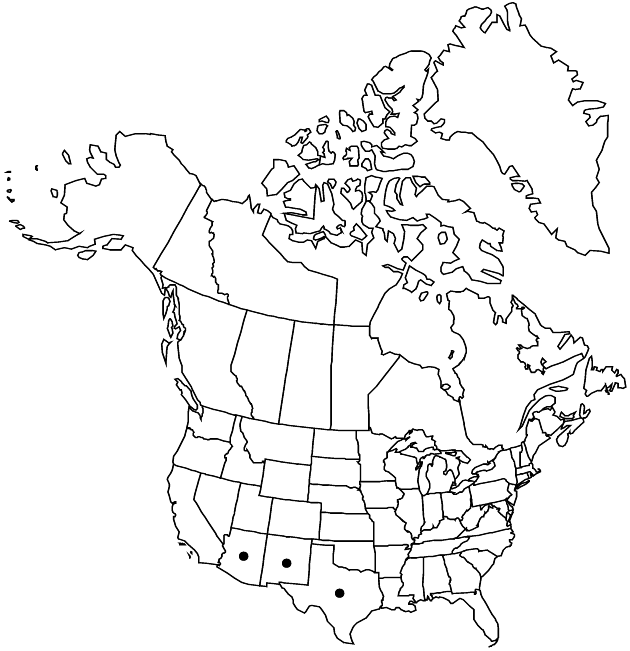Brickellia coulteri
Smithsonian Contr. Knowl. 3(5): 86. 1852.
Shrubs, 30–150 cm. Stems much branched from bases, pubescent, often gland-dotted. Leaves opposite; petioles 4–12 mm; blades 3-nerved from bases, broadly ovate to deltate, 10–60 × 10–30 mm, bases truncate, hastate, or subcordate, margins usually toothed (1–3 sets of sharp teeth near bases), rarely subentire, apices attenuate, faces minutely pubescent. Heads in loose, paniculiform arrays. Peduncles 5–40 mm, pubescent and sometimes gland-dotted. Involucres cylindric to campanulate, 8–12 mm. Phyllaries 17–22 in 4–6 series, greenish, often purple-tinged, 4–5-striate, unequal, margins scarious (apices acute to acuminate or mucronate, minutely pubescent); outer lance-ovate to narrowly lanceolate (glabrous or sparsely pubescent), inner narrowly lanceolate to linear (glabrous). Florets 13–25; corollas pale yellow-green, often purple-tinged, 7–8.2 mm. Cypselae 3–5 mm, hispidulous, strigose, or glandular-pubescent; pappi of 28–40 smooth or barbellulate bristles.
Distribution

Ariz., N.Mex., Tex., n Mexico.
Discussion
Varieties 3 (2 in the flora}.
Selected References
None.
Key
| 1 | Midstem leaf blades mostly 40–60 mm; peduncles mostly 15–40 mm, mostly glandular-pubescent | Brickellia coulteri var. coulteri |
| 1 | Midstem leaf blades mostly 20–40(–50) mm; peduncles 5–25 mm, pubescent, mostly lacking glandular hairs | Brickellia coulteri var. brachiata |